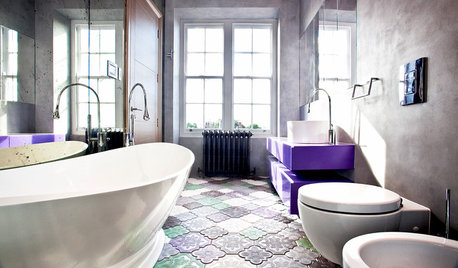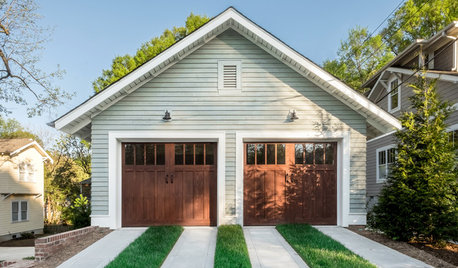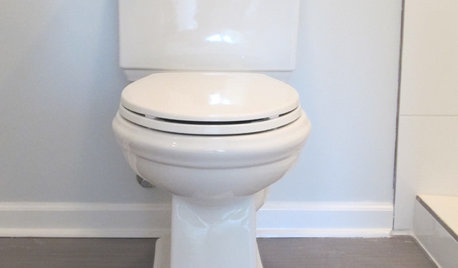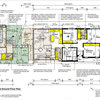Users who replaced pump with IntelliFlo - saved as expected?
ttmatsu
14 years ago
Related Stories

BATHROOM DESIGN14 Bathroom Design Ideas Expected to Be Big in 2015
Award-winning designers reveal the bathroom features they believe will emerge or stay strong in the years ahead
Full Story
GREAT HOME PROJECTSHow to Replace Your Lawn With a Garden
New project for a new year: Lose the turfgrass for energy savings, wildlife friendliness and lower maintenance
Full Story
SAVING WATER11 Ways to Save Water at Home
Whether you live in a drought-stricken area or just want to help preserve a precious resource, here are things you can do to use less water
Full Story
GREAT HOME PROJECTSHow to Replace or Revamp Your Garage Doors
Boost curb appeal and maybe even security with new garage doors. Find out cost ranges and other important details here
Full Story
SAVING WATER6 Reasons Why You Should Save Your Rainwater Now
Collect and store during the rainy season so you’ll have water ready for irrigation when you need it
Full Story
LIFEThe Top 5 Ways to Save Water at Home
Get on the fast track to preserving a valuable resource and saving money too with these smart, effective strategies
Full Story
LANDSCAPE DESIGNGet Along With Less Lawn — Ideas to Save Water and Effort
Ditch the mower and lower your water bill while creating a feast for the eyes with diverse plantings and gathering places
Full Story
BATHROOM DESIGNHow to Install a Toilet in an Hour
Putting a new commode in a bathroom or powder room yourself saves plumber fees, and it's less scary than you might expect
Full Story
MOST POPULARThe 25 Most Popular Photos Added to Houzz in 2013
See the newly uploaded images of kitchens, bathrooms, bedrooms and more that Houzz users really fell for this year
Full Story
HOUSEKEEPINGDishwasher vs. Hand-Washing Debate Finally Solved — Sort Of
Readers in 8 countries weigh in on whether an appliance saves time, water and sanity or if washing by hand is the only saving grace
Full Story






mas985
sbedelman
Related Discussions
Replacement of Central Air/ Heat Pump
Q
Best energy saving option to replace 2 water heaters ?
Q
Help: Replace Pentair WhispherFlo with IntelliFlo VF?
Q
Low Anticipated Electric Bill with IntelliFlo VS3050
Q
poolguynj
mas985
mas985
tresw
sbedelman
mas985
sbedelman
mas985
trhought
sbedelman
angiedfw
sbedelman
mas985
trhought
trhought
sbedelman
poolguynj
trhought
allen_we
mas985
trhought
mas985
sbedelman
sbedelman
trhought
trhought
sbedelman
sbedelman
trhought
landa_mac
sbedelman
txmomoftwo
mas985
trhought
ttmatsuOriginal Author
poolguynj
mas985
trhought
landa_mac
trhought
ttmatsuOriginal Author
mas985
ttmatsuOriginal Author
brentr_gw
mas985
mbhaska
poolguynj
mbhaska